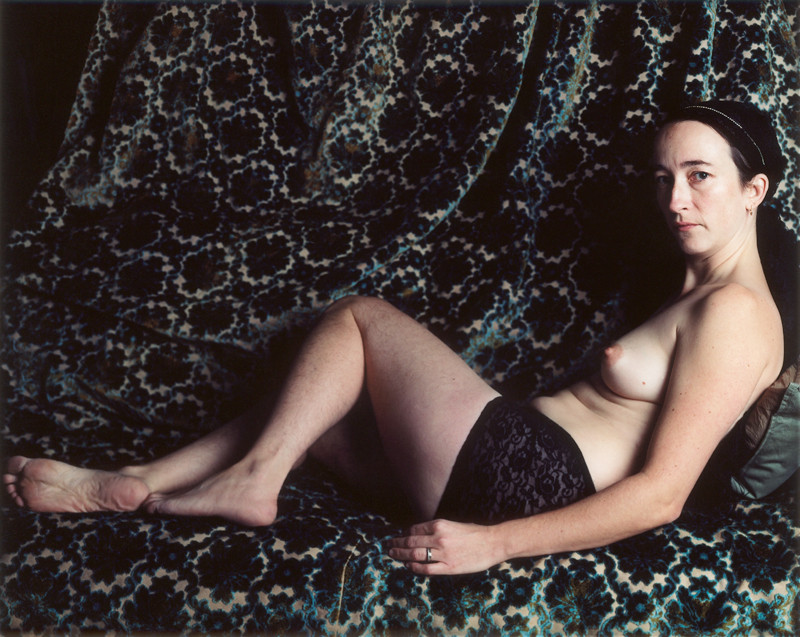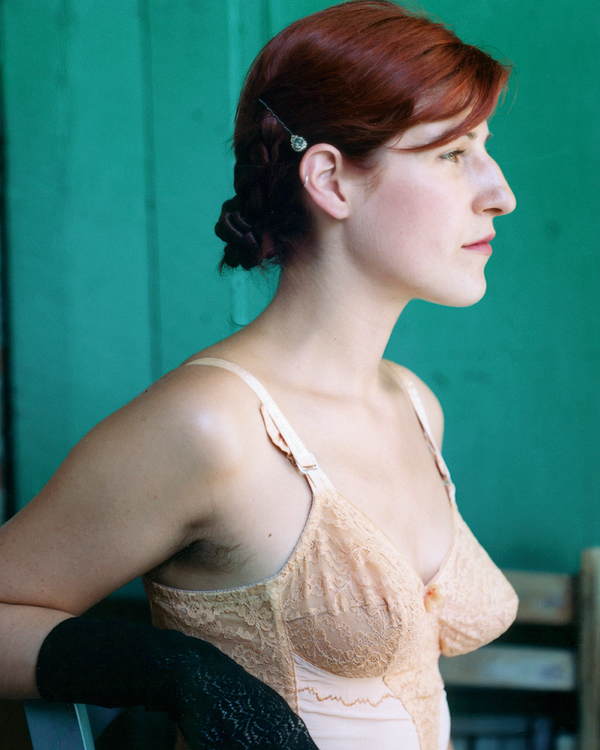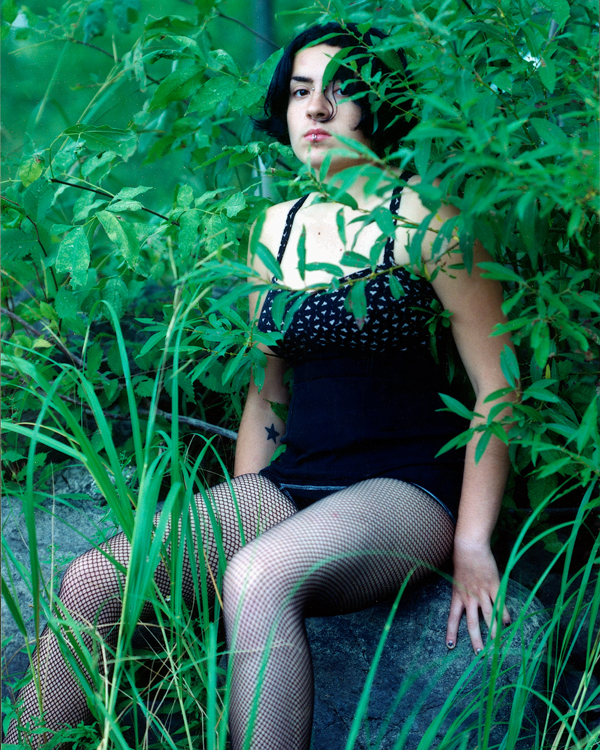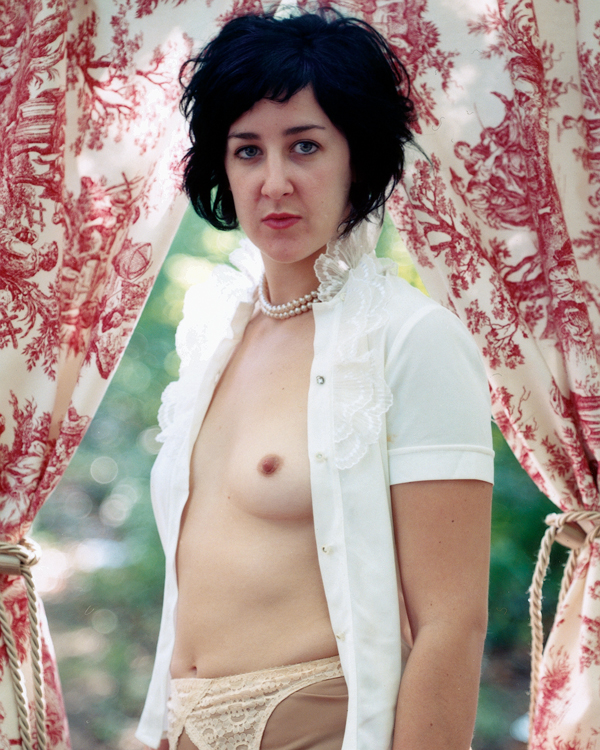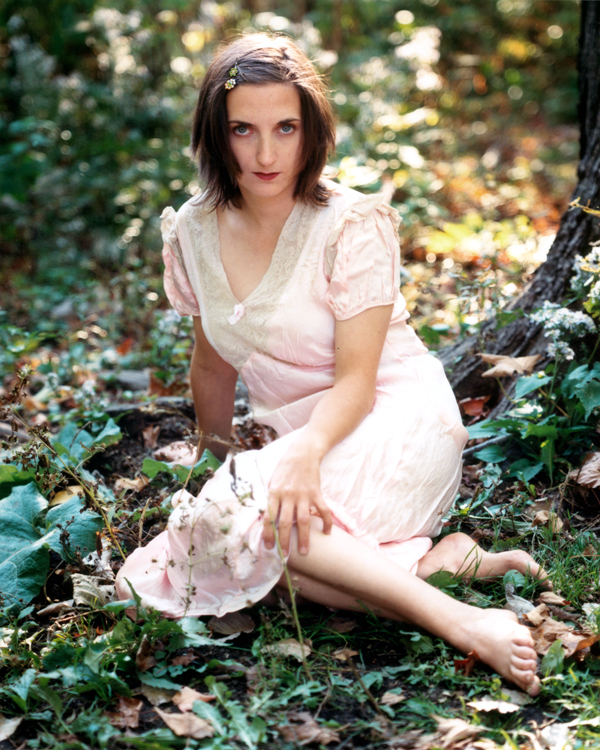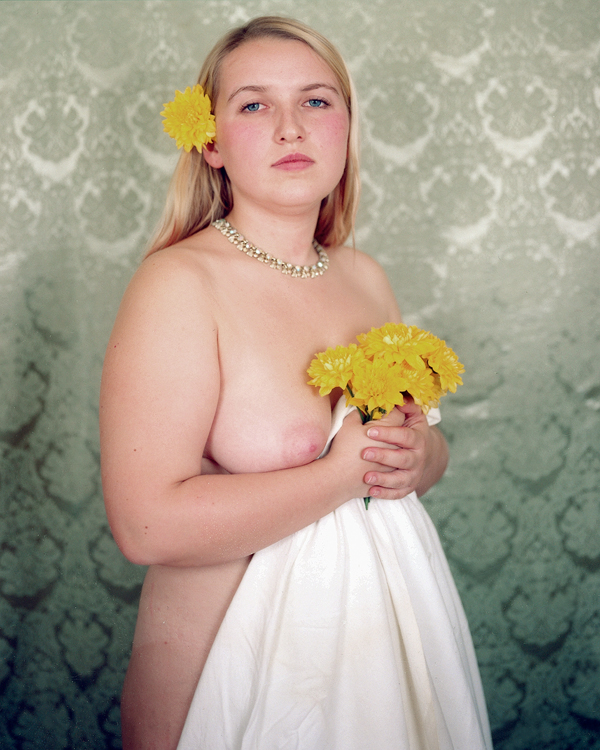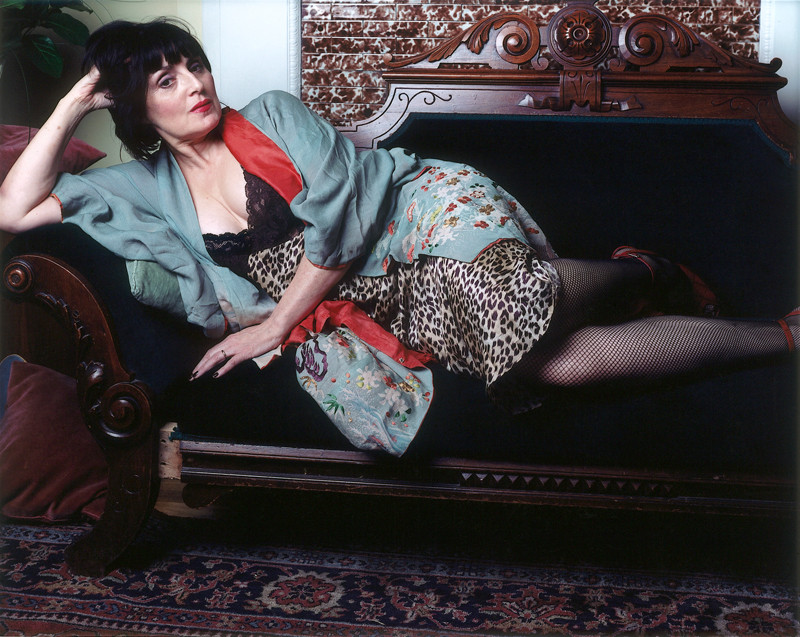[Summer 2002]
They appear to be completely aware of our voyeuristic presence.
by Dayna McLeod
Whether you like to admit it or not, we live in a society with an intense beauty-addiction problem that is directly tied to female representation and fantasy fulfilment. Our process of picking images apart to understand our relationship to them is becoming exhausting.
It is impossible to maintain a completely objective eye when we are continually over-saturated by the media blitz that attacks from store windows, television, magazines, billboards, computers, and history. Smart and sexy role models, sex-positive success stories, exploitative, progressive, demeaning, empowering; images that bombard us with contradictions further complicate and create an equally foggy playing field of representation. The pendulum swings between the sexually exploited and the sexually empowered. Makers of exploitative representations are even more ruthless press agents who create Grrl power user manuals for their Britney Spears and Baywatch products. Slipping through the cracks of feminist deconstruction, they are able to reach a wider audience by using catchy lingo and buzzwords to create an umbrella of tolerance and acceptance. In the other corner, an equally biased yet more self-conscious system of analysis exists that is dependent on marring, disrupting, or sabotaging these mainstream images. A language of subversion has erupted with just as many codes and triggers that signify a different type of beauty. We trip over our subjectivity while trying to categorically deconstruct the wasteland of spam that constantly floods the pictorial landscape. The women may have changed, but their subjectivity remains the same.
Marisa Portolese uses this flood to her advantage and capitalizes on her audience’s biased readings. Using the heavily weighted history of painting and photographic portraiture as a loaded springboard, she challenges our notions of beauty, female representation, and portraiture itself. In her series Belle de jour, Portolese has created post-feminist boudoir portraits by utilizing symbols, triggers, and fetishes of fantasy and beauty. Provocative and confrontational, her portraits turn the male gaze back on itself: her subjects are not caught in the act; they are engaged in the act of being seen. Self-possessed women of all shapes, sizes, and ages, each fills the frame with intense looks, confidence, sex appeal, and power as she looks head-on into the camera’s lens and past, to the viewer. Compellingly seductive, these subjects pose for themselves and for the camera with a confronting gaze that is just as powerful. They appear to be completely aware of our voyeuristic presence. The subject’s steady glare has transformed the gaze into a mirror that reflects this presence, our fantasies, and our prejudices of beauty back onto us: we are caught looking by the subject. The greater our dependency on fantasies of airbrushed supermodels with flawless features and figures, the greater the impact of the work. We have entered a room where we are surrounded by penetrating stares, self-assured seductresses, aging goddesses, and post-punk wood nymphs. The shear multitude of Portolese’s portraits intensifies this transaction of looking, while ultimately challenging the imaging of fantasy and female representation on both sides of the camera.
Anger bubbles beneath the tight-lipped glare of “Zoë,” a portrait of a young woman dressed in black fishnet stockings and a tight black bodice dotted with white hearts. She is in the woods; her fingers are stiffly pressed against the rock she is seated on, arms rigid, back straight. “Zoë” holds the weight of experience in her stiff posture and in her stern face, as if ready to spring at anyone who raises an eyebrow, anyone who does not act appropriately. Glaring at us with hard eyes, she is partially hidden by lush greenery, lip ring hugging a tense pout: it would be foolish to indulge in forest imp narratives or voyeuristic fairytales of innocence, yet fantasy is as present here for the subject as it is for the viewer.
Portolese’s subjects play with the roles that are laid out for them and our expectations of how they should be posed, how they should or should not be looking at us. Portolese gives her subjects control of their erotic identity by working with them, directing each subject to put a strong face forward, to claim a place for naughty narratives, fantasy role-playing, and active character development. They embrace their subjectivity and their potential fetishization; empowered by their right to present their vulnerability, their independence, and their sexuality. Capitalizing on their surroundings, Portolese captures her subjects occupying the role of the Venus, the seductress, the whore, the “Good Girl/ Bad Girl,” and other stereotypes that permeate our history of representation. Posed in hotel rooms, rich boudoir settings, and the lush outdoors, Portolese situates her subjects in Renaissance painting, Romanticism, Impressionism, classic photographic portraiture, 1950s pin-ups, cinema, and modern advertising with a single click of the camera. Her self-portrait in the series, “Marisa,” is an homage to Frida Kahlo, while “Mackenzie” suggests Manet’s Luncheon on the Grass. “Althea,” “Maryse,” and “Marielle” underscore references to Cindy Sherman’s “Untitled Film Stills Series” while alluding to Calvin Klein ads and Bunny Yeager pin-up photography. In “Naomi,” a young woman emerges from a lake, her wet pink negligee clinging to her hips and legs. A post-modern “Birth of Venus,” she glows with a soft, natural light, the surrounding water quietly implied at her thighs. She looks off-camera with a blank face, and a lip ring marks her undetermined expression.
A popular subject throughout art history, the reclining nude has been reinterpreted, recycled, and quoted by many artists. “Marie-Christine” is Portolese’s version of Manet’s Olympia; an image that Manet based on Titian’s Venus of Urbino. Despite the controversy surrounding Manet’s portrait of a lower-class prostitute at the time of its creation, this work has become part of today’s pictorial language, a common reference. Portolese’s “Marie-Christine” pushes the reclining nude one step further by casting an unshaved model as her subject. Legs prickly with hair, Portolese’s subject is topless and reclines wearing a pair of black lace panties, a black headscarf, and a silver ring on her left-hand ring finger. Portolese uses these signifiers in the same way that Manet used the black cat, the slippers, and the flowers in Olympia, except she places the weight of the subject’s appeal firmly in the grasp of the viewer by exposing this language of symbols. She ultimately creates a feminist narrative without glorifying or demonizing beauty, further exposing the viewer’s dependence on interpretation and beauty’s dependence on artifice.
Belle de jour plays with the construction of beauty and sex. It toys with our desires while questioning that nagging inner voice that speaks of exploitation. Portolese’s camera becomes the mediator between the viewer and their preconceived notions of beauty as well as facilitating the subject’s fantasy. The pleasures of fantasy are exposed as smart, confident, straightforward, and in control. “Alana,” “Margaret,” “Penny,” “Kate” – all of the subjects in the Belle de jour series demonstrate this cool confidence and exude sexual appeal on their own terms. Portolese enables her subjects to explore their own fantasies without restriction by prioritizing their position. There is no shame in being sexy.
The careful and self-conscious viewer has become so hyper-aware of female representation and its potentially exploitative nature that the enjoyment of “looking” and “seeing,” which is often privileged as exclusively male, has been lost or replaced by analysis. Portolese harnesses this wandering eye, daring us to examine our biases, encouraging us to think about the image’s construction, and ultimately promotes the enjoyment of voyeuristic fantasy play. Looking is still complicated, but it can be pleasurable.
Dayna McLeod is a freelance writer and video and performance artist working in Montreal. Schooled in the MFA program at Concordia University, McLeod previously attended the Alberta College of Art and Design in Calgary. She has travelled extensively with her performance work and her videos have played in festivals internationally.


